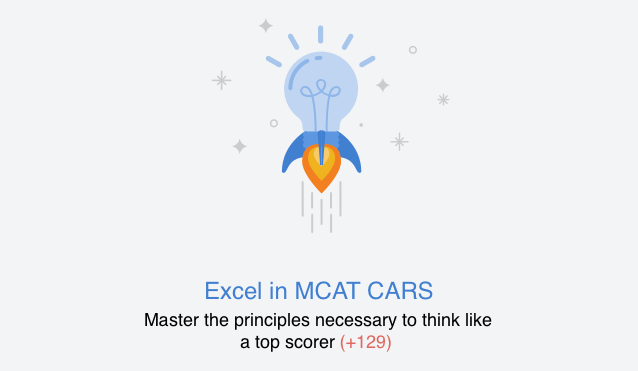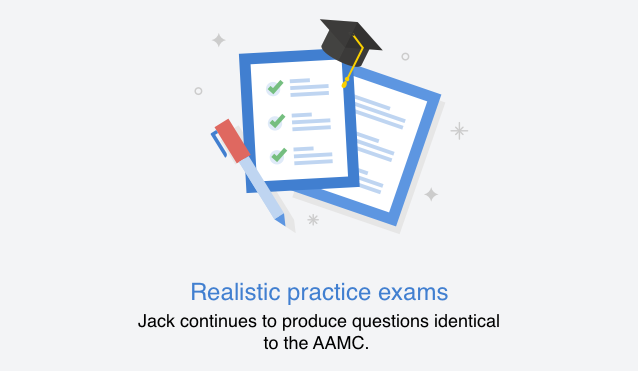How Competitive Are Medical School Admissions in 2025? A Year-by-Year Analysis
Medical school admissions in 2025 remain highly competitive, although the landscape has shifted compared to the early 2020s. Fewer than half of aspiring doctors who apply will secure a spot in any med school in a given cycle. Prospective students are navigating allopathic (MD) programs, osteopathic (DO) programs, and international medical schools with varying levels of selectivity. This comprehensive analysis breaks down recent trends including applicant volumes, acceptance rates, MCAT/GPA statistics, and seat availability for MD and DO schools, as well as the role of international programs. We’ll also explore why admissions competitiveness has changed, from the pandemic “Fauci effect” to policy shifts and evolving application strategies, so you can better understand how to approach the process in 2025.
MD Admissions Trends: Record Spikes and a Return to Normalcy
Allopathic (MD) medical schools experienced dramatic ebbs and flows in applicant numbers over the past few years. During the height of COVID-19, applications surged to an all-time high – a phenomenon often nicknamed the “Fauci effect.” According to AAMC data, the 2021-2022 cycle saw a 17.8% jump in MD applicants, reaching 62,443 applicants (up from ~53,000 the year before). This was the largest increase on record, far exceeding the prior record (8.2% in 2007-2008). Many attributed this spike to pandemic-driven motivation: heightened public interest in healthcare, a desire to address health disparities, and disrupted plans (like canceled gap year opportunities) that prompted students to apply to med school sooner. Changes in the application process such as virtual interviews (eliminating travel costs) and expanded fee assistance also lowered barriers for applicants.
By contrast, the past couple of cycles have seen application volume settling back toward pre-pandemic levels. In fact, 2024-2025 had about 51,946 MD applicants, the lowest since 2017-2018. This marks the third consecutive yearly decline in applicants – a 1.2% drop this year, on top of larger decreases of 4.7% and 11.6% in the prior two years. “We’re seeing a return to pre-COVID application numbers,” notes one AAMC director, explaining that the pandemic spike was not expected to permanently sustain. Indeed, recent applicant totals (around 52,000) resemble the steady range of ~52k–53k seen in the late 2010s. The table below illustrates this trend:
-
2019 (pre-COVID): ~53,369 MD applicants; ~21,869 matriculated (≈41% acceptance).
-
2021 (pandemic surge): ~53,030 applicants (slight rise); then 2022: 62,443 applicants; ~22,666 matriculated (only ~36% acceptance – very competitive).
-
2023: ~55,189 applicants; ~22,710 matriculated (≈41% acceptance).
-
2024: ~51,946 applicants; ~23,156 matriculated (≈44.6% acceptance).
Sources: AAMC and Jack Westin.
As shown above, the acceptance rate for MD programs dropped sharply during the surge (down to ~36% for the 2021-22 cycle when applications peaked) and has since rebounded to around 44% in 2024 as the applicant pool normalized. In other words, while overall odds of admission have slightly improved from the pandemic peak, less than half of applicants are gaining admission – medical school remains a tough arena. Notably, the slight increase in overall acceptance is due not only to fewer applicants, but also to more available seats. Total enrollment at U.S. MD schools reached 99,562 in 2024-25, a record high that approaches the 100k mark. First-year MD matriculants hit 23,048 in 2024, an all-time high. This growth is thanks to expanded class sizes and new medical schools (for example, the opening of the Thomas F. Frist Jr. College of Medicine in 2023).
Despite these additional seats, competition per school is still intense. Individual MD programs routinely admit under 5% of their applicants on average. According to recent data, the typical MD school’s acceptance rate is only ~4.3%, and several elite programs accept <1% of applicants. The academic caliber of accepted students remains extremely high. For instance, the average MD matriculant entering in 2022-2023 had around a 3.75 GPA and a 511–512 MCAT score (For comparison, the maximum MCAT is 528.). In short, gaining an MD admission in 2025 requires excellent credentials and a strategic approach, even though the “bubble” of pandemic-fueled applications has deflated. The process is marginally less frenzied than it was at the height of COVID, but it’s by no means easy – every seat is still highly coveted.
DO Admissions Trends: Growth of Osteopathic Schools and Easing Competition
Osteopathic (DO) medical schools have likewise seen significant changes in recent years. DO programs traditionally had slightly more accessible admissions than MD programs, but they too were swept up in the pandemic application surge and are now adjusting to new norms. The American Association of Colleges of Osteopathic Medicine (AACOM) reported that for the entering class of 2022, 23,488 applicants vied for DO school spots, of whom 8,636 matriculated. This means only ~37% were admitted that cycle. In fact, looking back:
-
2019: ~21,090 DO applicants; 7,764 matriculants (≈36.8% acceptance)
-
2020: ~21,668 applicants; 8,283 matriculants (~38.2%).
-
2021: ~22,708 applicants; 8,523 matriculants (~37.5%).
-
2022 (pandemic peak for DO): 27,277 applicants; 8,668 matriculants (~31.8% acceptance)
-
2023: ~23,488 applicants; 8,949 matriculants (~38.1%)
-
2024: ~22,810 applicants; 9,644 matriculants (~42.3% acceptance)
Just as in the MD world, DO schools saw an unprecedented influx for the 2021-2022 entry year – a 30% surge in applicants to nearly 27,000, which drove acceptance rates down to about 32%. This was an exceptionally competitive year for osteopathic colleges. However, since then the number of DO applicants has also receded. By the 2023-2024 cycle (entering 2024), DO applicants were back down around 22.8k, and with expanded first-year class sizes, the overall DO admission rate climbed to 42% in 2024. In other words, nearly 2 in 5 DO applicants now matriculate, a notable improvement from roughly 1 in 3 during the peak crisis year.
The growth in DO program capacity is an important part of this story. Osteopathic colleges have been increasing seats and opening new campuses throughout the past decade. In the 2023-2024 academic year, first-year enrollment at DO schools nationwide was 9,644 students, up from around 7,700 in 2019.Total osteopathic medical school enrollment across all four years reached 36,734 in 2022-23, a 4.4% increase from the year prior. This expansion reflects how DO medicine is no longer a “backup” or niche path, it’s a fast-growing sector of U.S. medical education, helping to alleviate physician shortages. In the 2020s the residency system was unified for MD and DO graduates, and by 2025 osteopathic physicians are matching into residency at rates nearly equal to their MD counterparts (over 92% of U.S. DO seniors matched in 2025) boosting confidence in the DO route as a viable path to practice.
Academically, DO programs maintain high standards, though slightly lower on average than MD programs. Recent data show osteopathic matriculants average around a 3.5–3.6 undergraduate GPA and MCAT scores in the 503–505 range, versus ~3.7+ GPA and ~511+ MCAT for MD matriculants. For example, in the 2022 entering class, DO matriculants had a mean overall GPA of 3.59 and an average MCAT near 504–505. Many applicants now apply to both MD and DO schools to maximize their chances. The philosophy and training in osteopathic medicine (with its holistic approach and OMM techniques) appeal to a growing number of students, and the lines between MD and DO in terms of career opportunities have blurred. Still, getting into a DO school is far from easy – individual colleges of osteopathic medicine often have acceptance rates in the single digits per school (e.g., 5–10% of applicants). The takeaway is that while the frenzy of applications has eased slightly for DO programs, you’ll need a strong application to secure one of the ~9,000 seats available annually.
International Medical Programs: An Alternate Pathway
With U.S. medical schools remaining so competitive, many prospective doctors explore international programs as an alternative. This category can include well-regarded schools in countries like Canada, the UK, or Australia (which typically have stringent admissions for non-citizens), but most often it refers to offshore MD programs in the Caribbean and other regions that cater to American students. These international medical schools tend to have more relaxed admission criteria compared to U.S. schools – for instance, some Caribbean schools accept students with GPA and MCAT scores notably lower than U.S. averages. As an example, during the 2022-2023 cycle U.S. MD matriculants averaged ~3.75 GPA and 512 MCAT, whereas one Caribbean institution (Ross University) reported its direct-entry students averaged GPA 3.27 and MCAT 494 for that year. The higher acceptance rates at many Caribbean schools are due to smaller applicant pools and multiple start dates, combined with a large capacity for incoming classes. In short, these schools offer a second chance for students who “missed the cut” at U.S. schools provided they are willing to study abroad.
Interest in international medical programs has been influenced by the U.S. admissions climate. During the surge of domestic applications, more students who were wait-listed or rejected in the U.S. likely looked to the Caribbean or other countries to pursue their MD. While exact application numbers for international schools aren’t readily published, the impact is evident in the physician workforce pipeline. Each year, thousands of graduates of international medical schools (both U.S. citizens and non-citizens) seek residency positions in the United States. In the 2025 residency Match, 9,761 international medical graduates (IMGs) obtained first-year residency spots in the U.S., which was over one-quarter of all new residents that year. Notably, 3,108 were U.S. citizen IMGs – illustrating that a substantial cohort of Americans go abroad for medical school and successfully come back to practice in the U.S. Without these internationally-trained graduates, the U.S. would struggle to fill all its residency positions and meet healthcare needs.
It’s important to distinguish between highly competitive international schools (like those in Canada or Ireland, which have admissions standards comparable to U.S. schools and limited seats for foreigners) versus offshore schools primarily for American/International students (like Ross, St. George’s, AUC, etc., which have more inclusive admissions). Caribbean medical schools in particular offer rolling admissions and multiple entry points per year, making them more flexible. However, students must weigh the trade-offs: while getting in may be easier, there are challenges in licensing exams and residency matching. The attrition rates can be higher, and historically the Match rate for U.S. citizen IMGs has been lower (~68% in recent years) than that of U.S. MDs or DOs. Nonetheless, the gap has been narrowing as some Caribbean schools improve their curriculum and support (for example, Ross University cites a 98% residency attainment rate for its graduates in 2022-2023).
For a determined student, international programs represent a viable route to becoming a physician. The key is ensuring the program is accredited (look for accreditation by bodies recognized by the U.S. Department of Education and ECFMG), and being prepared to excel in the USMLE exams and clinical rotations. The competitiveness of these programs varies – top English-speaking programs abroad can be competitive in their own context, while many Caribbean schools will accept a wide range of academic backgrounds. Given the continued tight admissions in the U.S., it’s understandable that international schools remain a crucial option and will continue to contribute graduates to the U.S. healthcare system.
Why Admissions Competitiveness is Changing
Several factors have driven the changes in medical school competitiveness from 2020 through 2025:
-
COVID-19 Pandemic Effects: The pandemic was a double-edged sword. Early on, it inspired a surge of interest in medicine, with applicants citing a calling to serve and witnessing frontline healthcare heroism. At the same time, pandemic disruptions (canceled research internships, shadowing opportunities, etc.) led many to accelerate their med school timeline rather than defer. This culminated in the record applicant boom of 2021-2022, as discussed. Schools adapted by moving interviews online and sometimes extending deadlines, which made applying easier for students. Now that the immediate pandemic urgency has passed, application numbers have tapered off as predicted. Post-COVID, some students may also be reconsidering work-life balance after seeing the stresses on healthcare workers, potentially tempering the rush to apply. In short, COVID created an anomalous spike that is now correcting.
-
Public Interest in Healthcare and Altruism: The heightened media focus on healthcare disparities, vaccine development, and public health during 2020-2021 ignited passion in many pre-meds. As one admissions dean observed, the incoming classes are “very concerned with issues of equity and justice” after seeing COVID’s impact on communities. This social consciousness continues to draw people to medicine, but interest has normalized to a steady state. It’s worth noting that interest in allied health fields (like public health programs) also jumped during the pandemic, reflecting a broader trend of youth aiming to make a difference. Whether this will sustain is something to watch; for now, medicine remains a top career goal for many, but perhaps with more realistic expectations of the challenges.
-
Policy and Education Changes: Over the past few years, there have been policy shifts affecting medical education. One major change was the unification of the residency match and accreditation for MD and DO graduates (completed by 2020). This has made DO schools more appealing, as evidenced by growing DO applications, since students know they won’t be limited in residency options. Additionally, many medical schools have placed greater emphasis on holistic admissions and diversity initiatives. Ironically, the U.S. Supreme Court’s 2023 decision on affirmative action could impact admissions going forward – schools are now finding race-neutral ways to maintain diversity, which might alter how they evaluate applicants’ experiences. Another change has been the increased availability of early assurance and post-baccalaureate programs to create more pathways into medicine, potentially easing competition for those who commit through those channels. On the flip side, MCAT exam changes and scheduling adjustments happened during COVID (e.g. a shortened MCAT in 2020), but those have reverted to normal. One positive trend is that some med schools and states have expanded seats (new schools in underserved areas, funding for more residency positions), which gradually helps match the supply of training positions to the demand of applicants.
-
Evolving Application Strategies: Prospective students have adapted their strategies in response to competitiveness. It’s now common to apply to dozens of schools across MD and DO to improve odds, which in turn makes each school’s applicant pool larger. In 2022, the average MD applicant applied to 18 schools (and many apply to 20-30 schools). Similarly, DO applicants on average applied to about 9 schools. With the rise of virtual interviews, candidates can attend more interviews without travel constraints, potentially holding more acceptances and making waitlists move slower. Students are also bolstering their resumes more than ever – engaging in extensive research, clinical experience, volunteering, and MCAT prep – to differentiate themselves. There is a greater awareness of the importance of the MCAT and GPA in getting past initial filters; for instance, knowing the median stats for matriculants (3.7 GPA, 511 MCAT for MD; 3.5 GPA, ~503 MCAT for DO) helps applicants realistically target schools. Many are pursuing application advice from consultants and free online resources to sharpen their personal statements and interview skills. Overall, today’s applicants are more prepared and savvy, which raises the bar for everyone.
In summary, the competitiveness of med school admissions in 2025 is the product of an extraordinary few years. The initial spike of interest driven by COVID has eased, but the applicant pool remains large and highly qualified. More seats exist now than ever before – yet admission rates haven’t skyrocketed because the number of applicants is still very high relative to those seats. Both MD and DO schools are seeing a caliber of applicants that compels them to be selective. Meanwhile, the option of international medical schools continues to serve as a safety valve for the overflow of qualified aspirants who don’t find a spot domestically. For prospective students, understanding these trends is crucial in planning how to apply effectively.
Conclusion and Next Steps for Applicants
For a student dreaming of being a physician, the data can be sobering: medical school in 2025 is competitive across the board. However, the trends also show reason for optimism. Overall acceptance rates have ticked upward in the most recent cycles as application volumes stabilize and new schools open. If you prepare thoroughly and apply strategically, your chances of admission are better now than they were at the height of the pandemic rush. Be sure to consider both MD and DO programs to expand your options, and research which schools align with your academic profile and values. If your GPA is on the lower side, for example, osteopathic schools or certain international programs might be worthwhile additions to your list (while still aiming for some MDs if your MCAT/GPA are within range). Strengthen all parts of your application – essays, extracurriculars, letters – and be ready to articulate why you’re passionate about medicine and how you’ve tested that commitment.
One area you can significantly control is your MCAT performance. A high MCAT score can open doors even if other parts of your profile are average. Conversely, given the competition, a low MCAT can quickly eliminate your chances at many schools. As you prepare to apply, make MCAT prep a top priority. Call-to-Action: Take advantage of resources like MCAT prep courses and practice sessions. For instance, you can explore Jack Westin’s comprehensive MCAT prep and join our free sessions to boost your exam readiness. These resources are designed to help you master the material and strategy for a competitive score, without breaking the bank.
Entering the medical field is challenging, but the need for dedicated physicians has never been greater. By staying informed about admissions trends and preparing diligently, you can improve your odds of success. Use the data and insights above to guide your approach apply broadly, focus on your strengths, address any weaknesses, and seek out support where needed. With perseverance and smart planning, you can navigate the competitive landscape of 2025 and secure your place in medical school. Good luck on your journey to becoming a doctor!









